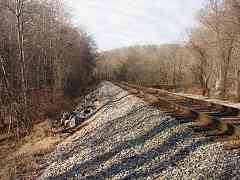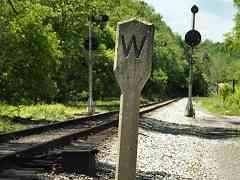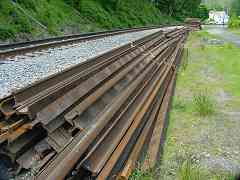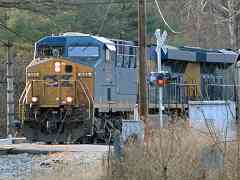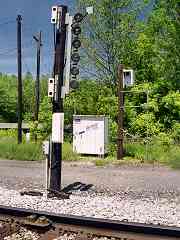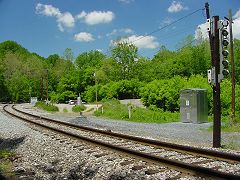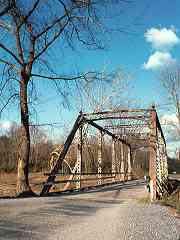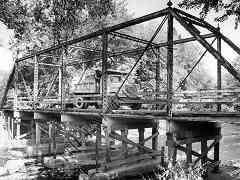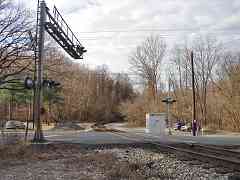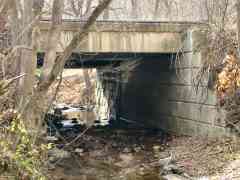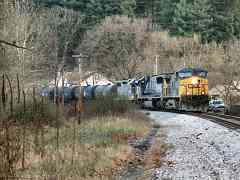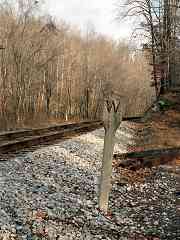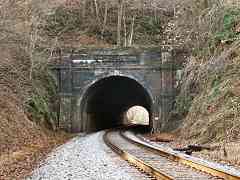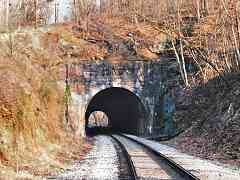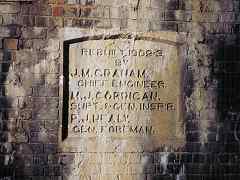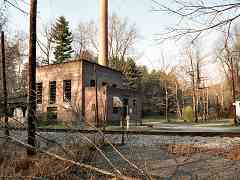|
Just west of the tunnel is where Henryton State Hospital had stood.
Repeated vandalism led to most of the structures being demolished
by government authorities during 2013.
The facility was smack dab in one of the most isolated sections of
Patapsco Valley State Park. Henryton Road used to cross the river and
railroad here, but the bridge was washed out by 1972's Tropical
Storm Agnes and was never rebuilt.
Reader Charley Wingate contributed the following:
"I think I can shed some light on the Henry Hospital Center mystery. It
was established in 1922 as a tuberculosis sanitorium and was converted
to a center for the mentally retarded in 1963, finally closing in 1985.
"However, either at the same location or in the same area, there is now
operating the Thomas O'Farrell Youth Center, targeted at male adolescent
'Substance Abusers, Drug Dealers, Weapon
Carriers, [and] Property Offenders'. The address is given as being on
Henryton Road proper, which according to the current ADC maps is not the
road that runs down to the river, but the one that runs parallel to it.
If you look at the ADC map, the are two holes cut out of the state park
area. The larger is clearly the old hospital; the smaller one, on the
north side of the road, would appear to be this treatment center.
Obviously this is the sort of place that is going to make the police
jittery."
Reader Glen Stegmiller sent the following historical information:
"Let me answer some of your questions -
"The boiler house is the building next to the tracks. You can still
See the old pipes that went up to the hospital. Next to the boiler house
used to be green houses.
"The old road crossing signals remained way after Henryton Road was closed
after (Tropical Storm) Agnes, they did close the road. The bridge remained until
about four or five years ago (1995). [Note from Steve: the remaining pavement
looks to me like it was disused many years before 1995.]
It was in bad shape - the same kind of bridge was also used on Marriottsville Road
until about 83-84? I did take pictures of that bridge defore it was taken down.
What traffic jams when the train came and the everybody needed to cross the old
one lane bridge! I understand the old Genstar Rock Co. used to pay for repairs to
keep the bridge up to par, because of the dump trucks that used it.
"Did you know about the old siding in Marriottsville? It was near
the RR signals and used to store MoW equipment. Before welded rail was
installed, I saw a derailment caused by the switch track and rocking cars.
"Agnes did a number on the OML. Did you know the state wanted to
buy the line after Agnes and turn it into a trail for walking and biking?"
| 